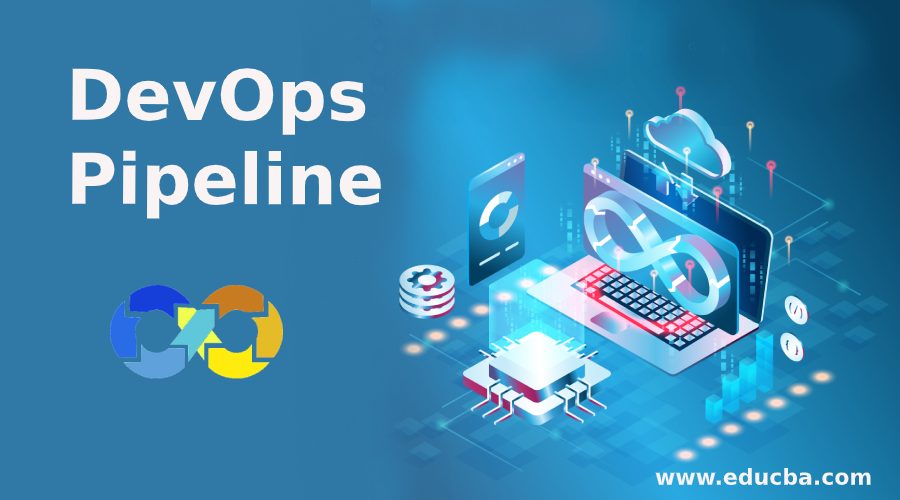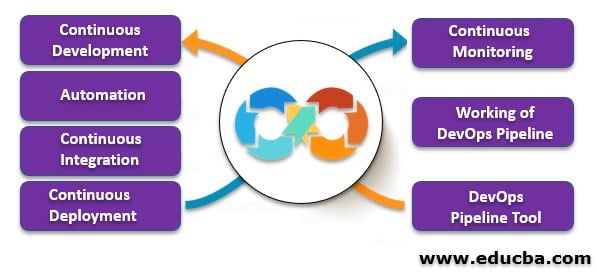Updated July 3, 2023
Definition of DevOps Pipeline
DevOps Pipeline is a pipeline that includes stages in the form of phases. Each stage includes manual things to be automated following continuous integration and development rules. The main and the most beautiful feature of a DevOps pipeline is that it provides an environment for the developer as well as a tester and the automation team to streamline the complex process of development and deployment as it is structured in a way where provisioning of different stages of DevOps lifecycle (development, testing, integration, quality assurance, staging, deployment, and production) is fulfilled.
Why do we Need DevOps Pipeline?
People consider DevOps as a process that mitigates the gap between developers and the operational team, extends the agile method, or automates the complete end-to-end flow of any process. However, that does not mean they have achieved overall DevOps. Many other factors influence the entire DevOps lifecycle. In a real sense, the DevOps pipeline creates an environment for the developers and the testers to make them experience the software-defined life cycle stages in actuality. In the software world, we consider automation the most important factor, but we never compromise on the product’s quality, which the DevOps pipeline takes care of. Thus, it is very much necessary to design a good pipeline and follow the staging phases in the DevOps Pipeline.
Components of the DevOps Pipeline
Every organization will have different requirements, depending on the components if we consider a DevOps pipeline. Of course, there are many components, but the focus mainly revolves around a few mandate components without which to achieve a complete quality product with less time and quality will take time. Below listed are a few mandate components of a DevOps Pipeline:
1. Continuous Development
It involves people from the entire organization. Whether it is the dev or ops team, both have the equal responsibility to ensure that the coding environment is proper as it will be moved ahead for production. Otherwise, incorporating DevOps with hope will become useless if the code’s functionality breaks in between or is not satisfying. The goal is to maintain quality code using version control or any good artifact to keep the codebase.
2. Automation with Quality Testing
Testing is the next crucial phase not only in terms of conventional software life cycle practices but also in terms of the DevOps lifecycle. Automation is incorporated with testing to encounter more bugs and provide developers the insight to provide quality code using automation that consumes less time and makes the process of mutual interplay between the developers and testers easy.
3. Continuous Integration
Automation testing is performed when a developer provides a codebase to the tester; continuous integration of the codebase after each phase of release and development also plays an important role. Only then will this satisfy another crucial phase of the DevOps lifecycle.
4. Continuous Deployment
Introducing this phase or stage as a component in the pipeline is necessary for completing any DevOps lifecycle. This component includes phases that involve containers or clusters with the main application. Once deployed, the application will go into production for end customers, and releases will be made incrementally.
5. Continuous Monitoring
At last, a phase or stage is an inevitable component of a DevOps Pipeline and a DevOps lifecycle. Many monitoring tools have been used, but then again, it depends on the requirement of the project, whether they are needed or not, because before going into the production environment, a constant check has been made in these phases on whether to deliver the product and whether every functionality of the application or product development is working as desired.
6. Working on DevOps Pipeline
All the components mentioned above of a DevOps pipeline play a pivotal role. It will take care of the entire end-to-end application development flow to application deployment with continuous integration and monitoring as its other important feature. But then again, it depends and varies according to the organizational requirements. If we take coding as the main requirement, i.e., to provide a coding environment, then the DevOps Pipeline will be staged in this fashion:
- Code Commit or Code Pull: Maintain the codebase using an artifact and version it.Example: git, SVN.
- Continuous Testing: We create a test-driven environment for the developer before moving it to the tester. Then, we provide the developer with dynamic testing feedback and suggestions using SonarQube.
- Continuous integration: Continuous integration Is performed once testing is done with Jenkins.
- Continuous deployment: After containerizing the application, we can use several containerization technologies, such as Docker and Kubernetes.
- Continuous Monitoring: A complete and constant check on the application using a tool like Nagios, AWS, etc.
7. DevOps Pipeline Tool
Every stage of the DevOps Pipeline requires a tool, but again, it is necessary to keep clarity in mind the requirement for application development. DevOps, it’s not just a mere play of tools; it is a methodology to optimize the overall end-to-end process and streamline the method from development to deployment. We can list the tools as follows:
- SVN, Git, Bitbucket: We use it as version control to maintain the codebase.
- SonarQube: Static Tool Analysis
- Jenkins: continuous integration and testing
- Allure and TestNG: for test-generating report
- Docker and Kubernetes: For containerization and deployment
- Continuous Monitoring: AWS and Nagios etc.
Advantages of DevOps Pipeline
- Bridges the gap and dependency between the teams.
- Time optimization with a trigger of a single application pipeline.
- Can achieve complete optimization using a customized DevOps pipeline.
- Ensures quality code and product deliverance to end-user, thus providing customer satisfaction.
Conclusion
DevOps itself is a topic still taking pace with the market scenario. Many organizations cannot accept or welcome this methodology wholeheartedly. Still, it is becoming challenging for every developer to slowly mitigate and fill the gap between the development and operational team. DevOps Pipeline has enhanced the overall DevOps lifecycle.
Recommended Articles
We hope that this EDUCBA information on “DevOps Pipeline” was beneficial to you. You can view EDUCBA’s recommended articles for more information.




